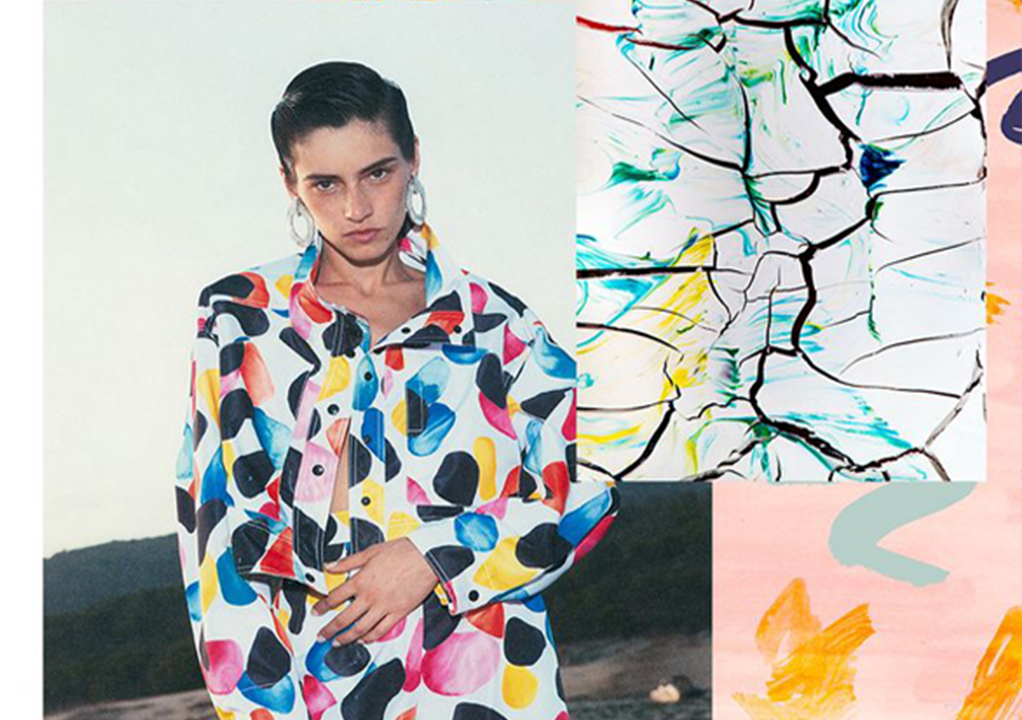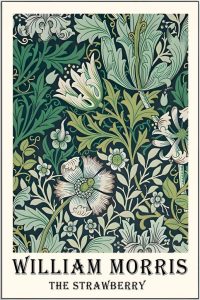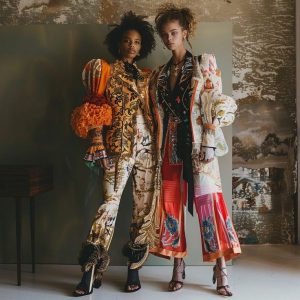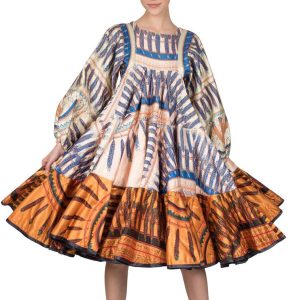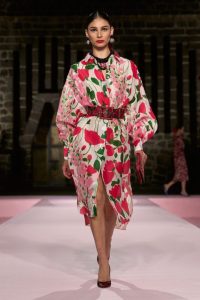What is genre in Fabric design?
Genre in fabric design refers to a specific category or style of design that has certain visual characteristics and features. These genres can be based on culture, time period, theme or specific design techniques and give it a specific visual identity.Each genre can change depending on the application, audience and fashion trends, and designers use them to create unique collections. In the following, we take a deeper look at each of these factors and common genres:
Factors influencing the formation of fabric design genres:
History and culture:
Many genres of fabric design draw inspiration from different histories and cultures. For example, fabrics with Islamic designs often include complex and repeating geometric patterns, while Chinese fabrics are known for their designs of plum blossoms, dragons, and certain fonts. These designs are not only aesthetically appealing, but also convey history and cultural identity.
Technology:
With the advancement of technology, fabric design has also undergone many changes. The advent of digital techniques has made it possible for designers to create more complex patterns and apply details with greater precision. These technologies have led to the creation of new genres such as 3D and interactive fabrics.
Social and environmental trends:
Interest in sustainability and environmental protection has given rise to genres that use recycled materials or patterns inspired by nature. These genres are not only ecologically important, but also refer to a particular lifestyle.
Techniques and methods of performance in different genres
texture:
Some genres are formed based on textural techniques. For example, jacquard fabrics are made using complex weaving techniques that create intricate, multi-layered designs.
Print:
Printing is one of the common ways to create fabric designs. In each genre, the printing technique can be different. Digital printing allows for more intricate and detailed designs, while traditional hand printing is used more for indigenous and ethnic designs.
Dyeing and coloring:
Dyeing techniques can also help shape specific genres. For example, the batik technique used in many Asian cultures helps create specific designs using wax and paint.
Different applications of fabric design genres:
Fabric design genres are different depending on their application. Modern and minimal fabrics may be used in furniture and interior decoration, while ethnic and tropical fabrics are more commonly used in casual or traditional clothing.
The influence of fabric design genres on fashion:
Each genre of textile design has a significant impact on the fashion industry. Fashion designers can give a special style and identity to their collections by choosing fabrics of different genres. For example, using vintage fabrics can give an ensemble a nostalgic feel, while modern and futuristic fabrics can help create a sophisticated and innovative look.
Common genres in fabric design
Classic and historical genre:
This genre includes designs inspired by specific historical period
s, such as Baroque and Renaissance designs. Patterns in this genre are often intricate and detailed, using rich colors and luxurious textures. In the field of fabric design with classical and historical genre, there are several outstanding designers whose works are known to be inspired by historical periods, traditional arts and classical patterns.Using traditional and modern techniques, these designers have been able to reflect the historical identity in an innovative way in fabrics.
Features of designers in classic and historical genres
Emphasis on originality:
These designers are usually inspired by historical and authentic patterns and try to produce them using traditional methods.
Complex details:
Classic and historical designs often have rich details and intricate patterns that reflect the arts of a bygone era.
Use of rich and natural colors:
Many of these designers tend to use rich and natural colors that give a luxurious and luxurious effect to the fabrics.
Traditional techniques:
Traditional techniques such as hand printing, embroidery and dyeing are used to preserve the historical authenticity of the designs.
Classical and historical genre designers
William Morris was one of the prominent pioneers of the Arts and Crafts movement in the late 19th century. She is known for designing fabrics inspired by nature, plant patterns, and gothic and medieval styles. Due to their high complexity and detail, his designs often included rhythmic and symmetrical repetitions of flowers and leaves. Morris used traditional dyeing and printing techniques and placed great emphasis on maintaining authenticity and handmade quality.
Features of the works:
Use of complex and symmetrical patterns Inspired by nature and historical periods, especially the Middle Ages Manual techniques in fabric production
Mariano Fortuny:
Mariano Fortoni was a Spanish designer who worked in the early 20th century. He is known for designing luxurious fabrics inspired by the classical periods of ancient Greece and Rome, as well as the Renaissance. Fortuny fabrics are known for using sophisticated dyeing and hand printing techniques that give the fabrics a special depth and texture.
Features of the works:
Inspired by ancient and renaissance art and cultures Use rich colors and detailed designs Special printing and dyeing techniques to create luxurious textures
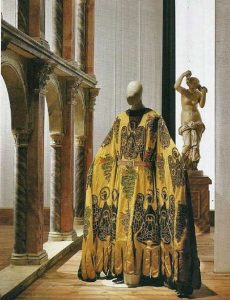
Liberty London:
Liberty London is one of the historical and famous brands in the design of classic fabrics, which has been active since the end of the 19th century. Liberty fabrics are known for their delicate floral designs and styles inspired by art nouveau and oriental arts. This brand continues to produce fabrics with classic patterns and is very popular among fashion designers and interior decorators
Features of the works:
Floral and delicate designs Inspired by modern art and oriental arts Using high quality and luxury fabrics.
Zandra Rhodes:
Although Zandra Rhodes is best known for her bold and bold designs, she has also drawn attention to the classic and historical genre in some of her works. Combining historic and classic patterns with modern colors and innovative printing techniques, Rhodes has been able to give his fabrics a unique look.
Features of the works:
Combining historical patterns with modern elements Using advanced printing techniques Dynamic and colorful designs.
Modern and digital genre
In the modern and digital genre, textile designers use innovative technologies and minimal, abstract or geometric patterns to create designs that match the modern space. Using digital tools, 3D printing, and unconventional color combinations, this genre gives fabrics an advanced and futuristic look.
Characteristics of designers in the modern and digital genre
Use of advanced technologies:
These designers use technologies such as 3D printing, digital printing and interactive technologies to create innovative fabrics. Abstract and geometric patterns: Many of these designers use minimal and geometric patterns to create a modern and futuristic effect.
Combination of art and science:
The works of these designers are often on the border between art, science and technology and seek to discover new methods in fabric design.
Advanced visual experience:
Fabrics designed in this genre provide a complex and attractive visual experience due to the use of advanced technologies.
Iris van Herpen:
Iris van Harpen is one of the pioneers of combining fashion and technology in the world of textile and clothing design. Using 3D printing technology and innovative materials, he creates fabrics that completely challenge the traditional boundaries of design. Van Harpen often collaborates with scientists and engineers to produce complex textures and patterns that are both aesthetically stunning and technologically advanced.
Features of the works:
Using 3D printing and innovative materials Inspiration from science and nature to create abstract forms Combining manual techniques with advanced technologies.
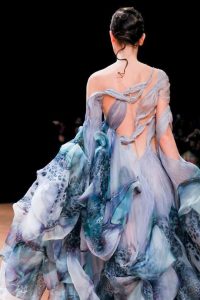
John Rogers:
John Rogers is one of the leading designers in the field of digital textile design. He uses advanced digital printing technologies to create fabrics with intricate and detailed patterns. Rogers is known for his ability to create designs that are produced with great precision and fine detail.
Features of the works:
Using digital printing to create detailed and complex patterns Combining minimal designs with abstract details Using modern colors and unusual combinations.
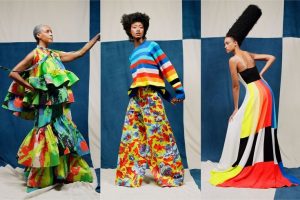
Mary Katrantzou:
Marie Katrantzou is one of the famous fashion designers known for her bold use of digital prints on modern fabrics. His designs often include geometric, three-dimensional patterns and natural landscapes, produced with high precision and in vivid colors. He uses advanced digital printing techniques to create depth and texture in his fabrics.
Features of the works:
3D patterns and complex digital prints Combining bold colors and modern palettes Designing fabrics with unique visual effects

Noa Raviv:
He is one of the innovative designers in the modern and digital genre, who uses the combination of 3D printing and design software to create unique fabrics. His works are a combination of traditional patterns with modern and digital forms that give the fabrics a creative and contemporary look.
Features of the works:
Using 3D printing and digital design software Creating complex geometric designs and abstract forms Emphasis on combining digital art with fabric design
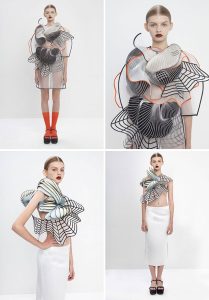
Bohemian genre
Free and colorful designs with intricate patterns that often include natural and ethnic elements. The bohemian genre is characterized by the use of free patterns, bright colors and asymmetrical designs. This style often includes elements from different cultures and somehow reflects a free and creative life.
Characteristics of designers in the bohemian genre
Using geometric and floral patterns:
Geometric, floral designs, as well as patterns inspired by various ethnic and traditional designs, are very common.
Natural and warm colors:
Colors like red, orange, brown, olive green, and dark blue are commonly used in this style. These colors often evoke a sense of nature and warmth.
Various textures:
Bohemian fabrics usually have a variety of textures, such as thick threads, embroidered fabrics, and fabrics with hand details such as beading or crocheting.
Mixing cultures:
This style draws inspiration from a combination of different cultural elements from around the world, including Asian, African, and Middle Eastern designs.
Asymmetric Design:
Many bohemian fabrics use asymmetric patterns, which give them a free and casual look.
Designers in the bohemian genre
Jonathan Adams:
Jonathan Adams is a famous designer and artist in the field of decoration and fabric design, who uses bohemian features in his works. Her designs often include warm colors, floral and organic patterns that showcase natural and free features well.
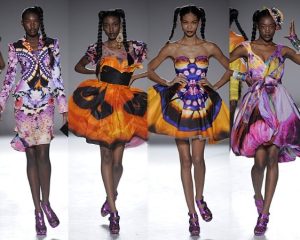
Megan Hayes:
Megan Hayes is a well-known textile designer who uses the principles of bohemian style to create unique designs in fabrics. She usually uses bright colors and natural jewels to create fabric designs that are close to the bohemian style.
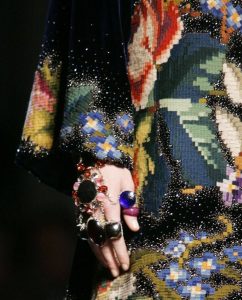
Emily Fox:
Emily Fox is a textile designer who considers liberating and informal colors and patterns in her designs. She uses natural inspirations such as flowers, leaves and curved lines to create patterns that best reflect bohemian style.
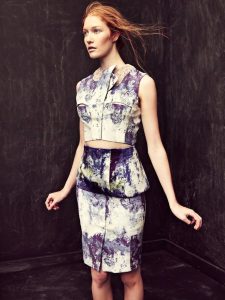
Vintage and Retro genre
Vintage fabrics are characterized by designs from decades past and evoke a sense of nostalgia. This genre includes designs from the 1920s with Art Deco motifs, to the graphic designs of the 1970s.
Vintage design features:
Classic Patterns:
Patterns like tiny florals, polka dots, small checks, and damask patterns are commonly seen in vintage fabrics.
Soft and matte colors:
pastel colors, cream, soft pink, pale blue, and mint green are among the popular colors of this style.
Delicate fabrics:
using fabrics such as satin, silk, linen and lace that have a sense of nostalgia and elegance.
Vintage Designers
Laura Ashley :
A famous brand known for its vintage floral designs.
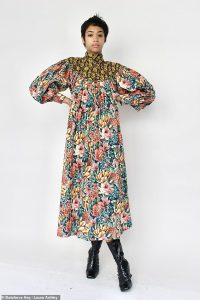
Liberty London:
They are reminiscent of the past periods with flowery and microscopic patterns.
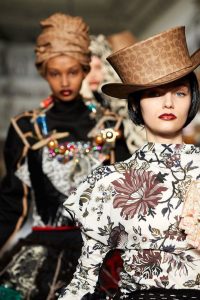
Retro design features
Bold and graphic patterns:
Use geometric patterns, abstract motifs, and large bold designs.
Vibrant and energetic colors:
colors like red, yellow, light blue, and phosphor green that recreate the feeling of the 60s and 70s. Synthetic textures: using fabrics such as polyester, nylon, and vinyl that were popular at the time.
Prominent retro designers
Marimekko:
Finnish brand known for its large and colorful designs in retro style.
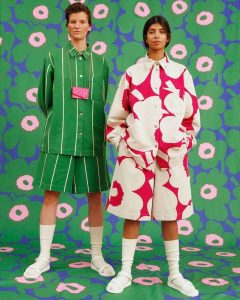
Emilio Pucci:
Italian designer who is famous for using geometric patterns and bright colors in his works.
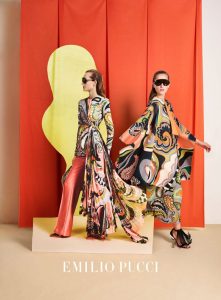
Tropical Genre
The tropical genre draws inspiration from nature and includes broad leaf designs, tropical flowers, and vibrant, cheerful colors. This style is very popular in summer clothes and interiors and it inspires a sense of freshness and energy. By combining the feelings of vitality and nature in their designs, these designers convey the feeling of vacation and relaxation to the audience.
Tropical design features
Natural and floral patterns:
designs with large leaves such as palm leaves, bananas and other tropical plants and colorful flowers such as orchids and helicanthums.
Cheerful and energetic colors:
colors such as dark green, mint green, red, orange, yellow, pink and blue convey a sense of freshness and tropical warmth.
Strange and special designs:
sometimes images of tropical animals such as birds, butterflies, monkeys and other animals native to tropical regions are used.
Famous designers in the tropical genre
Kate Spade:
Kate Spade is known for her cheerful and colorful designs. Tropical fabrics with happy colors and floral and natural designs are among the prominent features of her collections. By using plant patterns and energetic colors in her clothes, she displays a sense of tropical vitality and vitality.
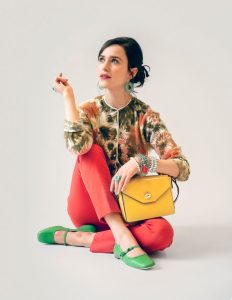
Marc Jacobs:
Marc Jacobs is also inspired by tropical designs in his summer collections. She has incorporated designs with large leaf patterns, colorful flowers, and tropical animals into clothes and fabrics in a stylish and modern way.
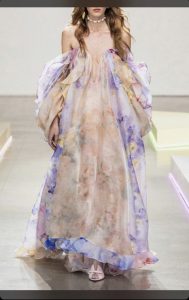
Hanna Andersson:
The Swedish brand is known for its children’s designs and uses tropical motifs in its clothes, including floral patterns, animals and tropical plants. The cheerful and energetic designs of this brand are more suitable for holidays and tropical areas.
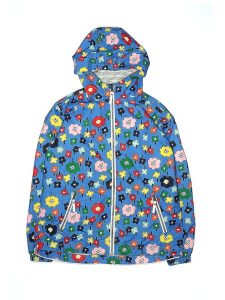
Tom Ford:
Tom Ford has also used tropical and plant patterns in some of his collections to create special and stylish designs. His designs often attract attention with the use of cheerful colors and bold designs.
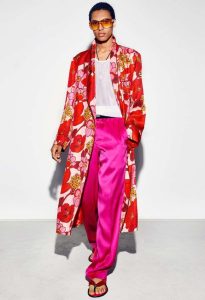
ethnic genre
This genre refers to designs that are inspired by different cultures and ethnicities. African designs usually include geometric patterns and strong colors, while Middle Eastern designs may include slim and intricate patterns.Designers in the ethnic genre are inspired by cultures, traditions and native arts of different communities of the world, especially African, Asian, Latin American and Middle Eastern communities. This style seeks to recreate art, motifs and patterns related to certain ethnicities and cultures.
Features of ethnic design:
Culturally specific patterns:
the use of geometric motifs, colors and designs that belong to specific ethnic traditions. Natural and earthy colors: colors like dark red, yellow, brown, blue, green and white that are inspired by nature and different cultures.
Features of ethnic design:
Culturally specific patterns:
the use of geometric motifs, colors and designs that belong to specific ethnic traditions.
Natural and earthy colors:
colors like dark red, yellow, brown, blue, green and white that are inspired by nature and different cultures.
Lisa Folawiyo:
Foley is one of the pioneer designers in the use of traditional Nigerian fabric called Anakara in contemporary fashion. She uses colorful and intricate African motifs and combines them with modern sewing and embellishment techniques.
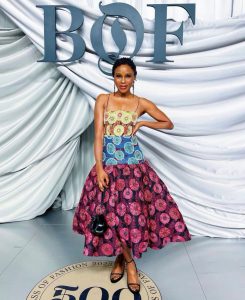
Carolina Herrera:
Herrera draws inspiration from Latin American cultures in many of his designs. He uses indigenous and local motifs and colors in his modern and luxurious designs, to give his works a Latin authenticity.
Kitsch Genre
Kitsch design is a carefree and fun style that draws inspiration from exaggerated elements and cultural symbols. Using vivid colors, unusual patterns and additional decorations, designers of this genre create a special visual appeal that is a combination of humor and seriousness. These designs usually consider the combination of disproportionate and different elements in a playful and bold way.It refers to designs that are intentionally visually appealing and exaggerated, but with a sense of disproportion, playfulness, and informality.This style is usually associated with a combination of cheerful colors, cultural symbols and flamboyant patterns, and often uses elements that may be seen as “tasteless” or “ridiculous” in the modern world, but at the same time has its own charm. have Kitsch design often draws inspiration from pop art, folk traditions, and informal cultural elements.
Features of kitsch design Bold and happy colors:
vivid and exaggerated colors such as pink, light blue, yellow, red and green are used.
Graphic and simple patterns:
kitsch designs are usually inspired by simple and graphic patterns such as bold lines, repetitive patterns, and plain images.
Use of folk symbols:
Use of objects and images that may be commonly seen in popular culture and everyday life, such as artificial flowers, cartoon images, and fun motifs.
Disproportionate composition:
One of the characteristics of this style is the combination of different elements in an unexpected and disproportionate way, such as the combination of unharmonious colors or the use of exaggerated decorations.
Prominent designers in the kitsch genre
John Galliano:
John Galliano is known for his creative and exaggerated designs. In some of his collections, he used kitsch designs, characterized by bold colors, large patterns, and unusual components such as extra embellishments and informal symbols. She often draws inspiration from popular culture and fun elements when creating her clothes
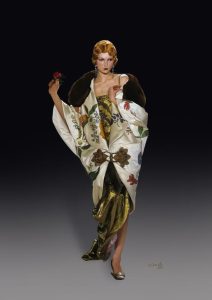
Vivienne Westwood:
Vivienne Westwood is one of the pioneer designers in using kitsch concepts in fashion. He uses playfulness and exaggeration in his designs, and many of his collections are characterized by bold patterns and vivid colors that are close to a carefree and happy style.

Dries Van Noten:
Dries Van Noten has used bold patterns and kitsch decorations in some of his collections. Her designs are usually a mix of unconventional colors and interesting designs, heavily inspired by pop art and popular culture
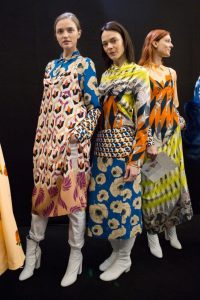
Tommy Hilfiger:
Tommy Hilfiger’s designs in some collections, especially in parts of the design of accessories and everyday clothes, have elements of kitsch style. The combination of bold colors and special designs, common symbols and visual appeal are the characteristics of his designs in this genre.
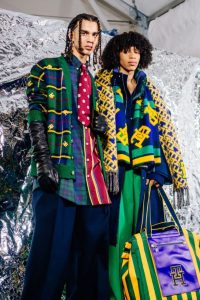
Genre in fabric design plays a key role in defining the identity and personality of a fabric. Formed from a combination of culture, technology, history and art, these genres allow designers to produce diverse and creative products that each affect users in a specific way.Choosing the right genre in fabric design can mean success in the market and attract a specific audience. Arachap company includes several stages and considerations in choosing a genre, which ultimately leads to the creation of designs that suit the needs of the market and customers.

